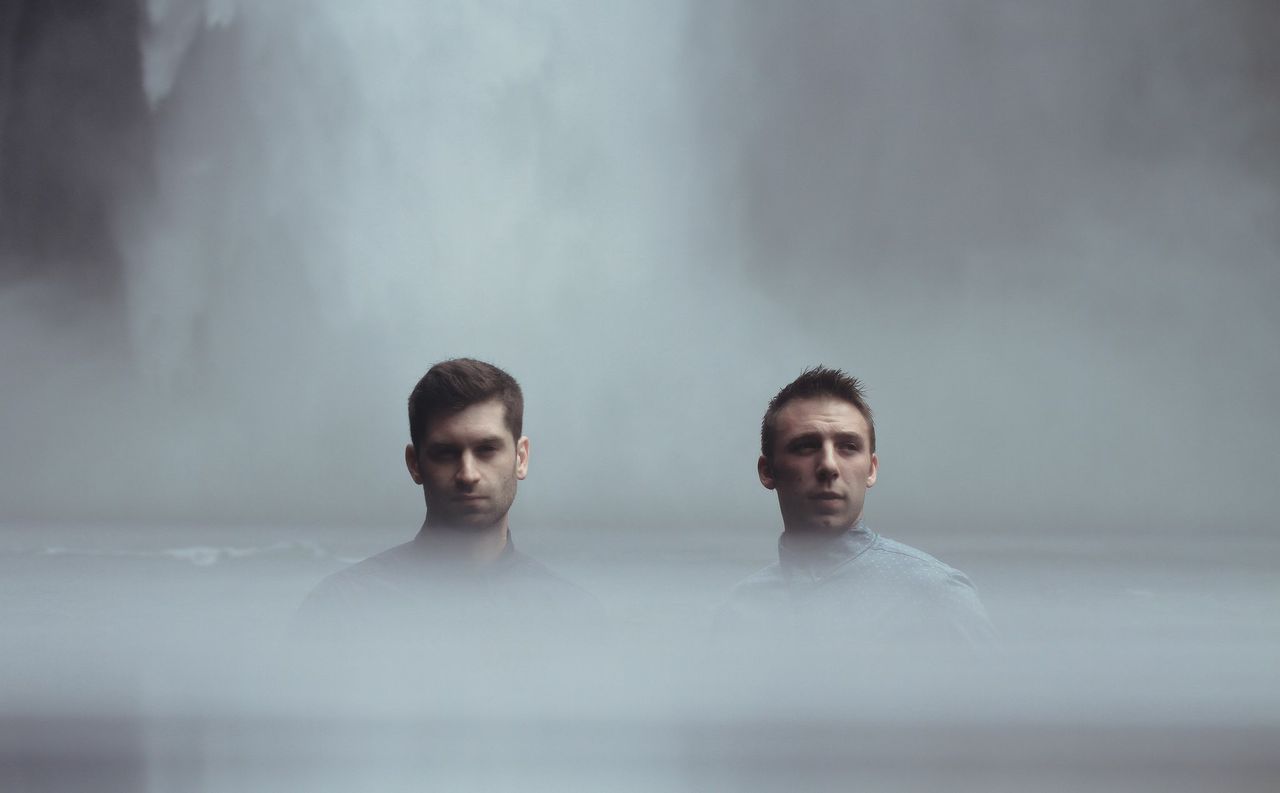ODESZA’s new album, In Return, is music that suits any scene in your life.
Picture yourself frolicking on a beach in slow motion, the sun refracting through cotton candy clouds and bouncing off the water, polaroid-style light-leaks filling up the sky; that’s how ODESZA’s music feels.
It’s hard to find a decent electronic song that you can listen to on the bus to school, in the shower, and while having a drink or three on a Friday night. It’s even harder to find an entire album of those songs. But that is exactly what In Return, ODESZA’S new album, is.
Harrison Mills and Clayton Knight, the duo who make up ODESZA, met through a mutual friend in their senior year at Western Washington University in Seattle. They clicked instantly, fitting together like audible puzzle pieces.
“We were the only people who were making electronic music at our college, really,” said Mills. “We just kind of sat down one day and jammed, and it went so well that we decided to make a project out of it. That actually became our first album.”
With electronic music ever on the rise, it can be hard to establish a distinct sound without alienating your audience or creating a niche. But ODESZA manages to do just that – they stand apart well enough to earn them a dedicated fan base, yet their sound is sufficiently familiar to appeal to everyone. Since their debut album, Summer’s Gone, though, the seeds of their sound have sprouted. With In Return, fans can expect a better-defined, more mature version of that recognizable sound.
“I think each album and EP we’ve done has been us trying something new in one way or another,” said Mills. “This one was definitely us trying to see if we could make a more song-based album. We actually have verses and choruses, and we worked with people to actually do vocals instead of just sampling songs.”
While song-making can be a lengthy process, Mills and Knight do it with speed reflective of their rise to popularity.
“What takes a while is finding the right singer and kind of going back and forth with them,” said Mills. “In general, we usually come up with ideas in the first day we’re jamming together, but all the detail work seems to take a bit longer.”
Some of their best-known songs aren’t originals, though, but remixes. And their mixing process is a different one altogether.
“It helps to not listen to the original song and actually listen to the individual stems by themselves – so, like, vocal, percussion, guitar, whatever – because we don’t want it to sound like what it originally was,” said Mills. “We want to really make an entirely new song out of the base that they’ve given us. And I think that’s what makes a good remix, too: if it’s recognizable but also completely different. Something we strive for in the remixes is to make it feel like a really unique song in itself.”
This focused, defined way of doing things has made ODESZA a name that gets more recognition with each new release. They played both Osheaga and Shambhala this year, to name just a couple festivals, and they’re just getting started.
Since their formation in 2012, they’ve released two studio albums and an EP – one album for each year of their existence. And coming out with so much music so quickly has paid off: just this month, they reached number one on Billboard’s dance/electronic album chart. But similar to that dream-like, ethereal beach scene, fame doesn’t quite seem real yet to Mills and Knight.
“I don’t think we’ve had any time to really soak it in, ‘cause we’ve been busy for the last two years straight,” said Mills. “We were working on the album the whole time we were touring, so there was never a moment to rest. Now that the album’s out, everything’s picked up and doubled back, so we’ve kind of just been constantly on the move – we’re either working on a remix, working on an original song, or on tour. But it’s a good thing, because we like to stay focused, keep working as hard as we can, and utilize the opportunity that we’ve been given.”
Part of that opportunity includes the chance to collaborate with impressive names in the music scene.
“Everyone we tour with has influenced us in a positive way. When you get to meet and talk to people that have inspired your music, you realize how much of a normal human they are,” Mills laughed. “Hearing their workflow and getting to pick their brains is really just an honour. Definitely one that stands out to me is Bonobo – seeing how humble he is and how talented he is was really inspiring. He’s like a god to me. A musician god.”
While their ascent to fame has been rapid, it wasn’t always that way. Their advice to any aspiring musicians?
“Play to the one person dancing. We really needed that when we first started out – we would focus on the 20 kids in the front who were only there for the headliner, when we were the 7 p.m. opening act. And to the audience: “It doesn’t really matter how stupid you look if you’re dancing and enjoying yourself. Those people have way more… what’s the word? Way more balls than anyone standing at the back and head bopping.”
Catch ODESZA at Le Belmont on Oct. 5.
